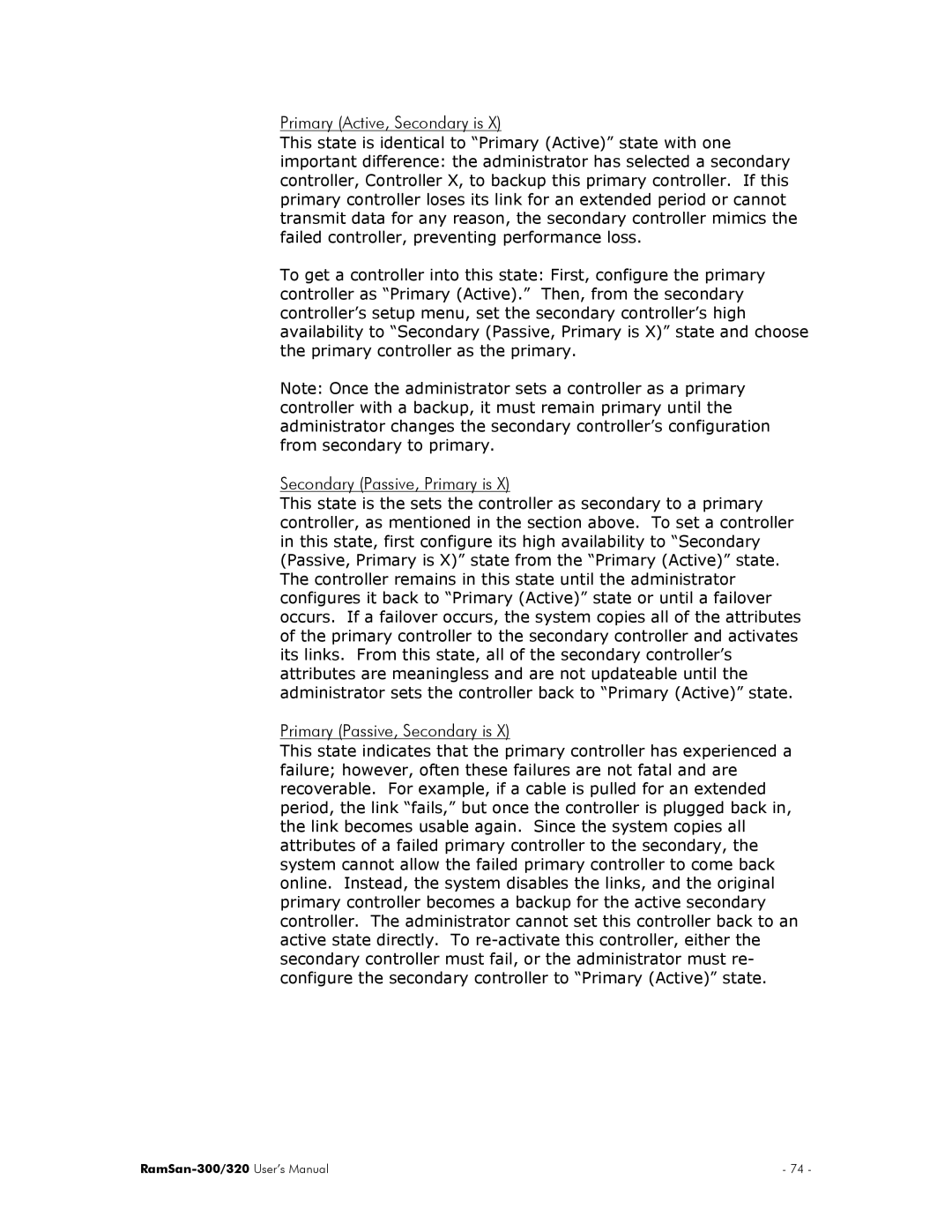Primary (Active, Secondary is X)
This state is identical to “Primary (Active)” state with one important difference: the administrator has selected a secondary controller, Controller X, to backup this primary controller. If this primary controller loses its link for an extended period or cannot transmit data for any reason, the secondary controller mimics the failed controller, preventing performance loss.
To get a controller into this state: First, configure the primary controller as “Primary (Active).” Then, from the secondary controller’s setup menu, set the secondary controller’s high availability to “Secondary (Passive, Primary is X)” state and choose the primary controller as the primary.
Note: Once the administrator sets a controller as a primary controller with a backup, it must remain primary until the administrator changes the secondary controller’s configuration from secondary to primary.
Secondary (Passive, Primary is X)
This state is the sets the controller as secondary to a primary controller, as mentioned in the section above. To set a controller in this state, first configure its high availability to “Secondary (Passive, Primary is X)” state from the “Primary (Active)” state. The controller remains in this state until the administrator configures it back to “Primary (Active)” state or until a failover occurs. If a failover occurs, the system copies all of the attributes of the primary controller to the secondary controller and activates its links. From this state, all of the secondary controller’s attributes are meaningless and are not updateable until the administrator sets the controller back to “Primary (Active)” state.
Primary (Passive, Secondary is X)
This state indicates that the primary controller has experienced a failure; however, often these failures are not fatal and are recoverable. For example, if a cable is pulled for an extended period, the link “fails,” but once the controller is plugged back in, the link becomes usable again. Since the system copies all attributes of a failed primary controller to the secondary, the system cannot allow the failed primary controller to come back online. Instead, the system disables the links, and the original primary controller becomes a backup for the active secondary controller. The administrator cannot set this controller back to an active state directly. To
| - 74 - |
